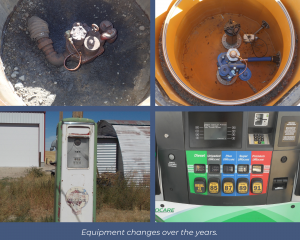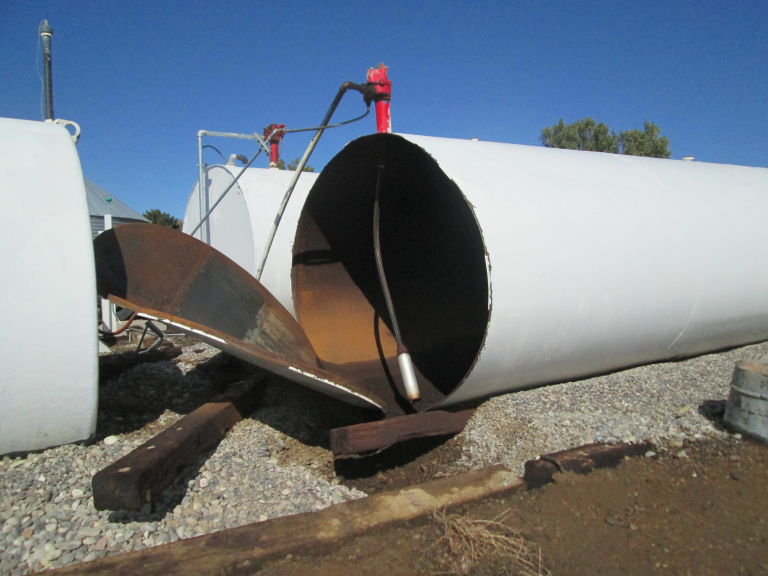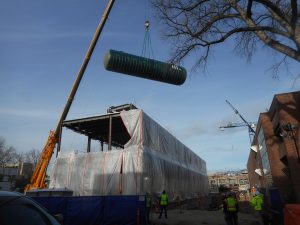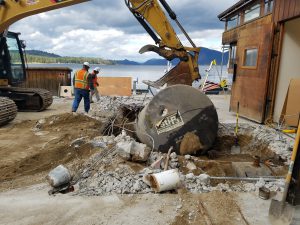Idaho has state program approval and regulates underground storage tanks (USTs) under the “Rules Regulating Underground Storage Tank Systems” (IDAPA 58.01.07). All Idaho UST rules are considered equal to federal regulations.
Each regulated UST system is inspected by staff every 3 years to ensure compliance. Compliance requirements include financial responsibility, training, release prevention, release detection, testing, and notifications.
Required Notifications
An owner/operator must submit the UST Notification Form for the following actions:
- At least 30 days before installing an UST
- At least 30 days before permanently closing an UST
- At least 30 days before installing new UST piping
- At least 24 hours before replacing UST piping
- Within 30 days after bringing an UST system into use, or back into use (with all required installation documentation)
- Within 30 days of acquiring an UST (owner/operator change)
- At least 30 days before switching to regulated substances blended with greater than 10% ethanol or greater than 20% biodiesel or other regulated substances identified by DEQ
- Within 24 hours of a suspected release
- Within 24 hours of confirmation of a release from the UST system (or another period determined by DEQ), owners/operators must perform the following initial response actions:
- Report the release to DEQ (e.g., telephone, email)
- Take immediate action to prevent any further release of the regulated substance into the environment
- Identify and mitigate fire, explosion, and vapor hazards
It is the UST owner/operator’s responsibility to meet all regulations regardless of who is hired on the project.
This accordion will not appear on the screen
Biofuels, primarily ethanol and biodiesel, have significantly increased the volume share of the national vehicle fuel market over the last decade with more alternative and renewable fuels projected to enter the market. It is essential to ensure that all UST systems will maintain their respective chemical and physical properties when in contact with the substance they are storing. Storing fuel in an incompatible UST system may jeopardize the integrity of the UST system and cause a release into the environment.
When a regulated substance containing greater than 10% ethanol, greater than 20% biodiesel, or any other regulated substance identified by the implementing agency is stored in an UST, the owner/operator must demonstrate the compatibility of the UST system (i.e., tank, piping, containment sumps, pumping equipment, release detection equipment, spill equipment, overfill equipment). DEQ must receive this documentation and notification of this change 30 days before the substance is stored.
 UST equipment must be properly maintained and tested periodically to work as designed. See the “Rules Regulating Underground Storage Tank Systems” (IDAPA 58.01.07) for specific requirements (e.g., walkthrough inspections, leak detector testing containment testing). DEQ has test reporting forms available.
UST equipment must be properly maintained and tested periodically to work as designed. See the “Rules Regulating Underground Storage Tank Systems” (IDAPA 58.01.07) for specific requirements (e.g., walkthrough inspections, leak detector testing containment testing). DEQ has test reporting forms available.
Idaho rules and provisions of EPA regulations require facilities to meet several requirements:
- Have trained operators.
- Conduct monthly self-inspections.
- Have release detection methods in place.
- Conduct annual testing requirements for release detection equipment.
- Have UST metal components protected from corrosion and periodically pass a corrosion equipment test.
- Conduct 3-year testing requirements for overfill devices (e.g., phase-out ball floats), spill buckets, and containment sumps.
- Ensure UST system fuel compatibility (30 days before making a change).
- Perform suspected release reporting.
- Ensure emergency generator systems have release detection required now for newly installed systems.
- Submit annual tank fee payment of up to $100 for each tank or tank compartment.
Service providers can assist with UST rules and regulations compliance. We do not license contractors for UST-specific work, but other agencies address a contractor’s eligibility to work in Idaho. Idaho UST rules require UST equipment to be properly installed under a code of practice developed by a nationally recognized association or independent testing laboratory and under the manufacturer’s instructions. The installer must be certified by the tank and piping manufacturers of the equipment installed. We maintain a Service Provider Directory for the convenience of the UST owners and operators. It is the UST owner/operator’s responsibility to meet all regulations regardless of who is hired on the project.
Each regulated UST must have petroleum contamination/pollution insurance or provide proof of financial responsibility. The Idaho Petroleum Clean Water Trust Fund, administered by the Petroleum Storage Tank Fund, is a state nonprofit insurance organization that provides coverage for approved petroleum cleanup costs and valid third-party claims resulting from covered accidental releases commencing during the policy period.
There are many regulatory factors to consider when installing or replacing UST tanks, dispenser piping, or an entirely new UST system:
- How does the new equipment affect the current regulatory requirements in your jurisdiction?
- Does the installer have knowledge and experience with DEQ installation or UST closure requirements, testing procedures, industry standards, and Occupational Safety Health Administration regulations (29 CFR 1910 and 1926)?
Installation must be performed by a trained professional certified to install that specific equipment by the UST equipment manufacturer. A series of inspections and testing must take place before bringing the UST system into service, and specific installation documents must be submitted to DEQ within 30 days of the system being placed into service. The owner/operator must meet all rule requirements regardless of the installer used on the project.
Before installing an UST system, submit a notification form at least 30 days before installation. At least 48 hours before installing the tank and piping, contact us to schedule a site visit during the installation.
When a tank system is closed for 3 months or more, owners/operators must comply with the following requirements:
- Maintain insurance or proof of financial responsibility.
- Maintain designated Class A/B operators.
- Pump tank out to less than 1 inch of product in the UST system, including piping (have pump-out documentation available for DEQ inspection).
- Maintain release detection and records on both tanks and piping if more than 1 inch of the product remains in the tank.
- Maintain corrosion protection, if applicable.
- Leave vent lines open and functioning.
- Cap and secure all lines, pumps, manways, and other equipment (this includes placing a padlock on the fill pipe).
- Immediately restart all compliance procedures when/if the product is returned to the UST system.
When permanently closing regulated tanks, owners/operators must evaluate the presence of a release where contamination is most likely to be present. Because of the inherent dangers in handling tanks (e.g., explosive vapors, potentially hazardous petroleum residuals), DEQ recommends that only qualified and experienced personnel close UST systems. Improper handling of the material in the USTs and piping can result in releases that require costly cleanups.




